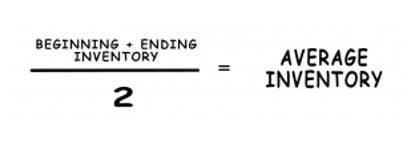
Industries such as retail, manufacturing, distribution, and wholesale often utilize profit margin commission structures to motivate sales teams and drive efficient sales practices. I usually use tiers based on total dollar sales because they align well with my attention to revenue targets. You establish all sorts of tiers, each with a higher commission rate as sales volumes increase. It’s basically adding a bit more motivation for the team to excel.
Effective Commission Structures Increase Sales Revenue
A commission is a fee that a business pays to a salesperson in exchange for his or her services in either facilitating or completing a sale. Salespeople may be compensated solely on a commission basis, or they may be paid a base salary, on top of which a commission is also paid. Commissions are an especially useful tool when a business owner wants to reduce the breakeven point of a business by converting salesperson compensation into a variable cost. At the core of this setup is the draw, which is a predetermined amount given to sales reps as an advance on future earnings. It will make sure they’re supported during slower periods, preventing them from being financially strained if they don’t meet their targets immediately. If a salesperson ends up with $2000 short from their draw after a difficult month, they can recover this amount in future successful months as they start to achieve better sales.

What is the Formula for Sales Commission?
If you pay 4 bookkeeping and payroll services percent commission on the gross revenue, he would receive $4,000. Businesses pay commissions to sales reps based on the amount of sales they generate. This is a common form of compensation intended to motivate high levels of production. The amounts you pay will vary greatly based on whether you use the net revenue or gross revenue approach to compute commissions. Calculating sales commissions involves several steps to ensure that sales representatives are compensated fairly for their work. While there are technologies in 2023 that allow you to automate your commission calculation, you may want to do it all manually.

Commission Plan Types with Industries

These factors are important to consider when calculating sales commission, as they can significantly impact the commission a salesperson receives. By considering these factors and creating a fair and transparent commission structure, businesses can motivate their sales team to achieve their goals and drive revenue growth. In a tiered commission structure, sales representatives earn different commission rates depending on their sales performance. Typically, as sales targets increase or specific milestones are met, commission rates escalate accordingly. For example, a salesperson might earn a 5% commission on sales up to $10,000, but if they exceed $10,000 in sales, their commission rate might increase to 7% for sales beyond that threshold.
Net profit margin is determined by dividing a company’s net income by its revenue and multiplying the result by 100. The net profit margin formula is described in greater detail later in this story, along with hypothetical and real examples. It requires collecting important tax forms and tracking employee hours, including overtime, vacation time, and sick time. You are also responsible for calculating, filing, and paying employee and employer taxes. It does, however, present challenges if you have hourly or other nonexempt employees. Many states do not allow a monthly pay schedule for nonexempt workers.
- Additionally, you should consider the timing of company events like fiscal quarters or product releases, which may affect sales performance and the computation of commissions.
- Commission calculations consist of many variables like commission rate, overrides, returns, and commission splits.
- For instance, in a bi-weekly pay structure, the commission might span sales from the first to the fifteenth of each month.
- Each method has its own benefits and drawbacks depending on your business needs.
- This method has really improved how I forecast and motivate my own sales activities.
- If your focus is to process as many sales transactions as possible, this approach makes sense.
Commission payment how to calculate commission on net profit structures vary across businesses and industries. Sometimes commissions are paid out in flat rates, as fixed percentages of sales, or on a sliding scale that changes based on sale volume. Calculating sales commissions is essential for many businesses, especially those that rely on a sales team to generate revenue. Considering the importance of the process, it is necessary to understand that several essential factors must be considered when determining how much commission to pay a salesperson. Commissions are vital to a company’s sales strategy, motivating sales teams to exceed targets by rewarding performance. Utilizing cutting-edge tools, companies can tailor commission plans with real-time performance data, aligning with market shifts and individual objectives.
- So, choose the period you seek commissions for and then round up the sales you conducted in this period.
- For a monthly pay period, employees receive one paycheck per month, usually issued on the first or last day of the month.
- Net profit margin, or simply net margin, measures how much net income or profit a company generates as a percentage of its revenue.
- It consists of all the non-production costs, which some companies list as a separate line item.
Knowing how to calculate net profit is essential for business owners and investors. It consists of all the non-production costs, which some companies list as a separate line item. Selling, general, and administrative (SG&A) expenses are also included in the operating expenses of a business. Net profit is commonly referred to as the “bottom line” because it appears at the bottom portion income statement of an income statement. Net profit refers to the amount of money left after all the expenses have been subtracted from revenues. Based on your variables, the calculator will calculate the commission amount.
Would you prefer to work with a financial professional remotely or in-person?
First is gross profit, which subtracts only the cost of goods sold (COGS) from the total revenue. Investors can assess if a company’s management is generating enough profit from its sales and whether operating costs and overhead costs are being contained. Are you ready to revolutionize your commission management and drive unparalleled sales performance? Look no further than Plentive – your trusted partner in incentive plan optimization and commission automation.

Whether you’re considering manual payroll or automated services, this guide offers information on simple payroll for small business from setup to processing payroll. Contribution margin is highly useful in evaluating the financial health of your business. It can also be helpful in assessing the commission payment model your business uses. If on another job that brings in $10,000, your costs are elevated to $8,000, you’d pay 5% of the 20% profit margin or $100. For example, if a sales representative at a marketing agency signed on a new client for a $1,000 package, and you pay a 10% net revenue commission, the employee would make $100 on the transaction. Change the value of your commission rates in the case of instances where your rate is different from your regular rate.


